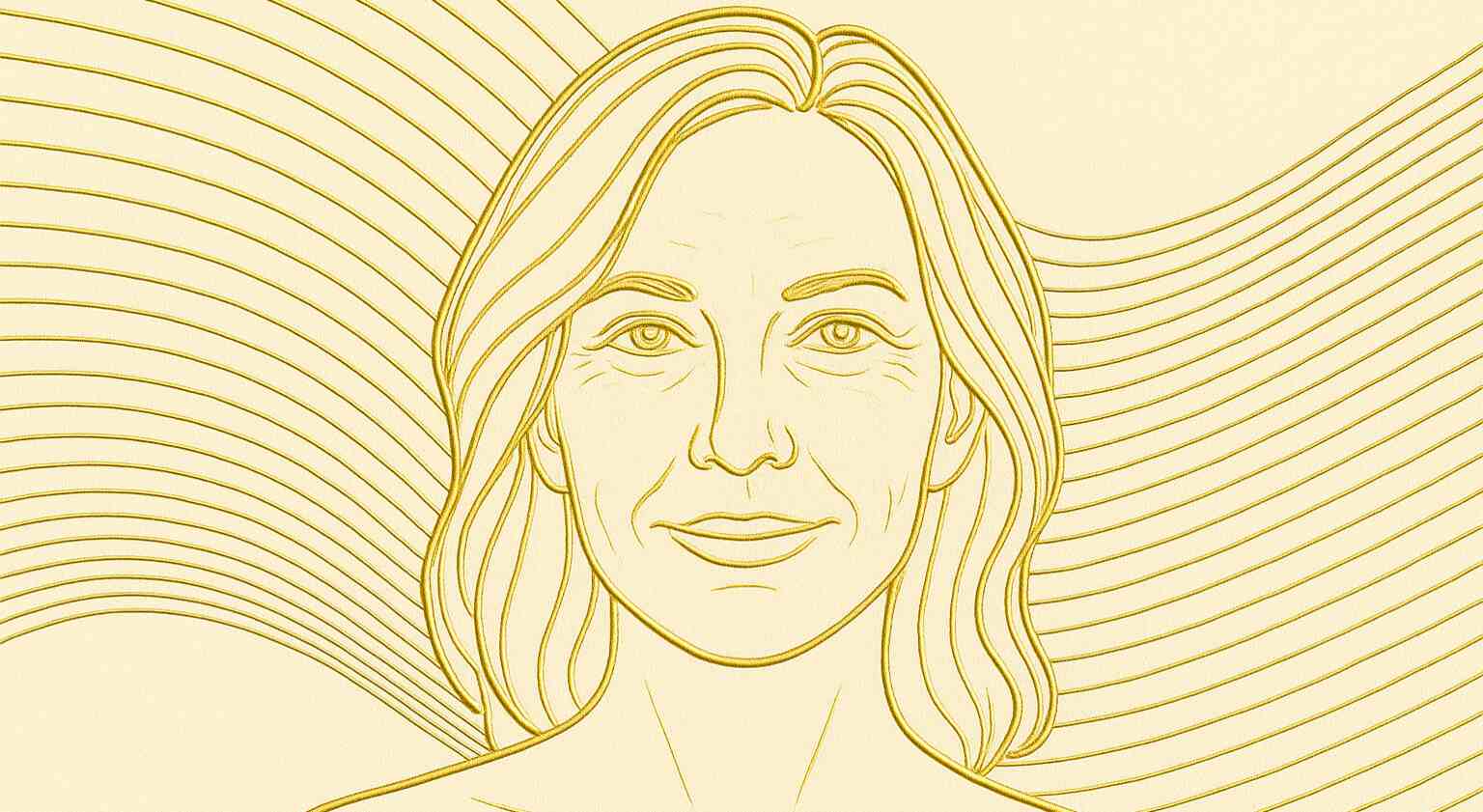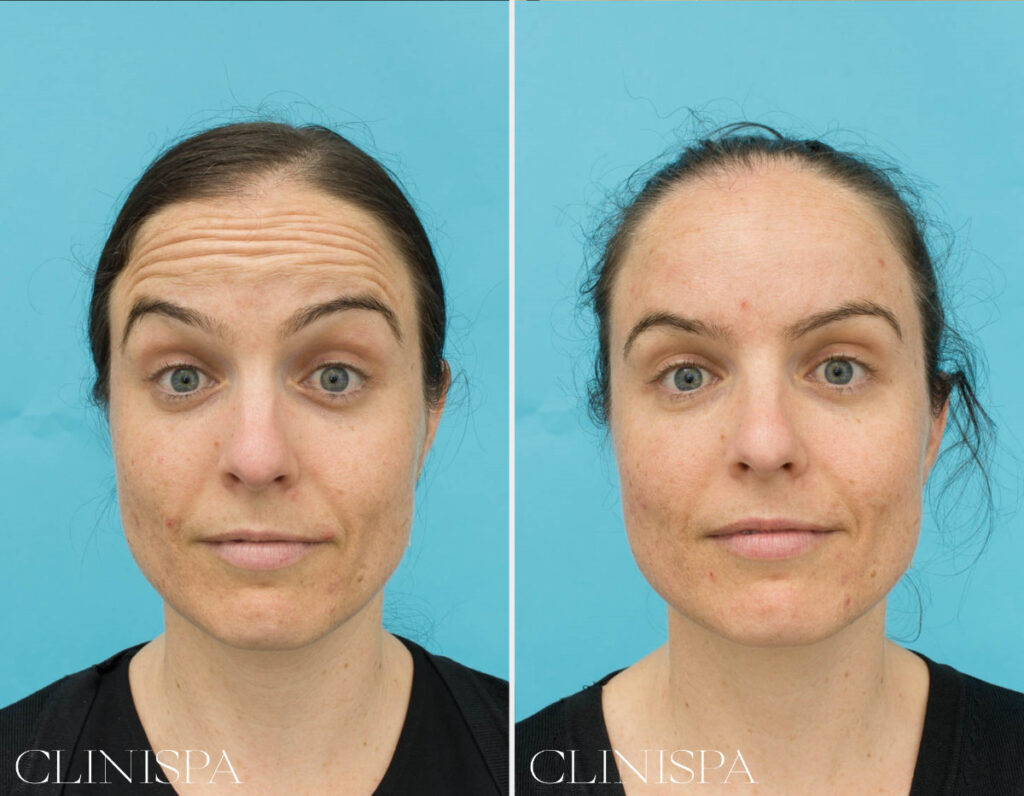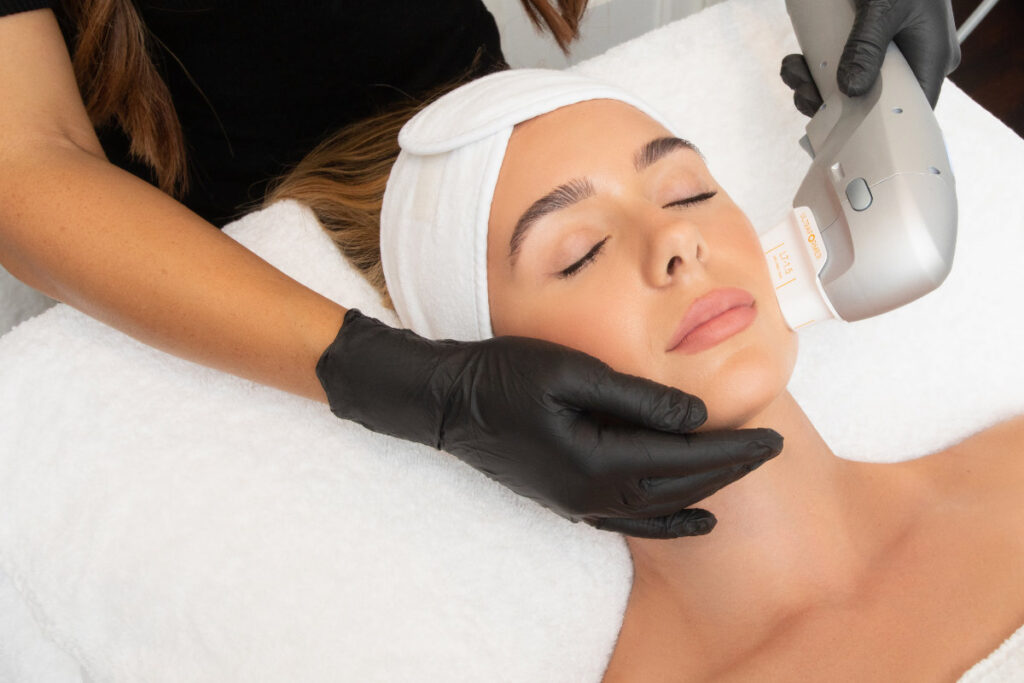
Facial wrinkles are one of the most common reasons patients seek professional medical guidance as they navigate the ageing process. In Perth, individuals are increasingly looking for accurate, responsible, and evidence-based information—free from unrealistic promises or commercialised messaging.
At CliniSpa, under the leadership of Dr Guy Watts, a highly trained Specialist Plastic & Reconstructive Surgeon, patients receive personalised assessments and treatment plans tailored to their individual anatomy, lifestyle, and goals.
Dr Watts combines extensive surgical expertise with a patient-centred approach, meaning that every treatment—whether surgical or non-surgical—is grounded in sound clinical reasoning. Concerns about facial wrinkles are addressed with sensitivity, professionalism, and a commitment to helping patients make well-informed decisions.
What Causes Facial Wrinkles? A Natural Part of Ageing
Facial wrinkles develop due to a variety of factors that affect the skin, connective tissue, muscles, and facial fat compartments over time. These changes occur gradually and are influenced by both biological and environmental variables.
Dynamic vs Static Wrinkles
- Dynamic wrinkles form through repeated muscle movement. Every time we smile, frown, squint, or raise our eyebrows, small creases form in the skin. Over the years, these creases may become permanent, particularly if the skin has lost its elasticity. Common examples include crow’s feet around the eyes, frown lines between the brows (glabellar lines), and horizontal forehead lines.
- Static wrinkles remain visible even when facial muscles are at rest. These are typically deeper and may appear around the mouth, under the eyes, or along the jawline. Static wrinkles often result from a loss of volume, skin thinning, and cumulative exposure to environmental factors such as UV radiation.
Key Contributing Factors
- Age-related collagen and elastin loss: Collagen gives the skin its firmness, while elastin allows it to return to its original shape after stretching or contracting. As we age, production of both proteins declines, leading to sagging and increased wrinkling.
- Sun exposure (photoageing): In sun-exposed regions like Perth, ultraviolet (UV) radiation plays a significant role in accelerating skin ageing. UV light breaks down collagen fibres, damages DNA in skin cells, and leads to pigmentary changes, including conditions such as melasma and fine lines, particularly on the face.
- Genetic predisposition: Some individuals are more genetically prone to early wrinkle formation or have thinner skin that shows age more readily. Ethnicity, skin type, and family history can all affect how and when wrinkles appear.
- Smoking and pollutants: Tobacco smoke introduces free radicals that impair blood flow to the skin and accelerate cellular breakdown. Environmental pollutants may also contribute to skin degradation and premature ageing.
- Repetitive facial movements and expressions: Over time, habitual expressions—such as squinting or frowning—can contribute to crease formation. Even subtle movements, when repeated daily, impact the overlying skin, especially when structural support diminishes.
Understanding the underlying mechanisms behind facial wrinkles helps patients recognise that these changes are not flaws—but natural results of living, expressing, and ageing. Seeking guidance is about exploring medical options, not erasing individuality.

Understanding Patient Concerns About Facial Wrinkles
At CliniSpa, we frequently consult with patients who feel their outward appearance no longer aligns with how they feel internally. These concerns are deeply personal and vary from individual to individual, but several common themes emerge.
Common Patient Perspectives
- “I look tired or unwell, even when I feel fine.” Wrinkles and volume loss, especially around the eyes and mouth, can create the appearance of fatigue or sadness. Many patients report that friends or colleagues frequently ask if they’re tired or upset—prompting them to seek advice.
- “My skin has lost its smoothness.” Individuals may notice that their skin texture has changed, with more creases, less suppleness, and an overall change in skin tone or firmness. These changes often become more noticeable under certain lighting or when applying makeup.
- “I’m starting to feel less confident in professional or social settings.” While not everyone feels this way, some individuals—especially those in public-facing roles—become increasingly aware of how ageing affects perception. Patients often raise these concerns discreetly and appreciate open, respectful dialogue.
- “I’ve always taken care of my skin, but the changes are becoming harder to manage.” Many patients who prioritise skincare, sun protection, and a healthy lifestyle still experience facial ageing and want to understand their clinical options.
Rather than viewing these concerns as superficial, we acknowledge them as legitimate reasons to seek medically guided support. Our approach encourages thoughtful exploration, not impulse or pressure.
When to Consider Professional Advice
There is no age or wrinkle depth that defines when someone should seek medical advice. For some, it begins with mild forehead lines in their 30s; for others, it may be deeper creases in their 50s or 60s. The decision to consult with a medical professional should reflect personal goals—not societal standards.
Potential Indicators for a Consultation
- Wrinkles are becoming more defined or visible at rest: This suggests the transition from dynamic to static lines, which may be more challenging to manage with over-the-counter products alone.
- The face appears more fatigued, even when rested: Changes in skin tone, muscle tone, and volume can create shadows that mimic tiredness.
- Difficulty with daily routines like makeup or skincare: Fine lines or deeper creases may cause makeup to settle unevenly or lead to a less seamless application.
- Interest in preventing further changes: Early intervention with evidence-based treatments can sometimes delay the progression of more significant ageing signs.
- Seeking clarity about what is appropriate: Many patients simply want to know what their options are, based on their anatomy, age, and goals. A consultation with Dr Guy Watts provides accurate, individualised advice without obligation.
Non-Surgical Treatment Options at CliniSpa
CliniSpa, under the direction of Dr Guy Watts, provides medically guided non-surgical treatments that are tailored to patient anatomy and facial dynamics. All treatments are delivered in a clinical environment with a focus on safety, precision, and realism.
Neuromodulators
- How they work: Neuromodulators temporarily block nerve signals to specific muscles. This reduces the muscle movement that leads to dynamic wrinkles, particularly in the upper third of the face.
- Common treatment areas: Forehead lines, glabellar (frown) lines, and crow’s feet are typical areas treated with this approach.
- What to expect: The treatment takes only a few minutes, with less interruption to daily activities. Results typically appear within a few days and may last three to four months, depending on the individual.
- Clinical benefits: In addition to flattening lines, neuromodulators may prevent deeper creases from forming if used consistently over time.
Dermal Fillers
- Purpose: Designed to restore volume and reduce the appearance of static lines. Often used for the cheeks, nasolabial folds, marionette lines, and under the eyes.
meaning compliance with Australian health standards and regulations. - Subtle outcomes: Fillers, when administered with precision, offer gentle contouring without overcorrection. Dr Watts takes a conservative, anatomy-led approach.
- Longevity and re-treatment: Results vary, but many fillers last between 6–18 months, depending on the type and location.
Why medical oversight matters
These treatments require a detailed understanding of facial anatomy to avoid complications and achieve balanced, natural-looking outcomes. At CliniSpa, all injectable treatments are performed with the oversight of Dr Guy Watts, supporting high standards of patient care.
When Surgical Intervention May Be Discussed
For some patients, non-surgical treatments may offer limited benefit due to the extent of skin laxity, deep wrinkles, or shifting fat compartments. In these cases, surgical options may be considered as part of a comprehensive facial treatment plan.
Examples of Surgical Procedures
- Facelift (Rhytidectomy): May be appropriate for mid- or lower-face concerns such as jowls, sagging cheeks, or deep nasolabial folds. The goal is to reposition underlying tissues—not simply tighten the skin—to achieve a more even contour.
- Eyelid Surgery (Blepharoplasty): Addresses loose skin, puffiness, or fine lines around the upper and/or lower eyelids. This procedure can improve the appearance of tired or heavy eyes.
Additional Considerations
- Candidacy: Ideal candidates are in good general health, have realistic expectations, and understand the recovery process involved.
- Longevity: Surgical outcomes typically last several years, although the natural ageing process continues.
- Technique and customisation: Procedures performed by Dr Guy Watts, a Specialist Plastic & Reconstructive Surgeon, are carefully tailored to preserve facial identity while addressing structural changes.
Surgery is never recommended lightly and only after a thorough consultation where anatomical findings and patient preferences are clearly aligned.
Dr Guy Watts’ Approach to Managing Facial Concerns at CliniSpa
At Clinispa we provide care that is both clinically precise and empathetic. Our approach to treating facial wrinkles centres on understanding the patient as a whole—not just their skin or symptoms.
What Makes His Approach Distinct
- Specialist training: As a Specialist Plastic & Reconstructive Surgeon, Dr Watts has years of surgical and anatomical training focused on both aesthetic and functional outcomes.
- Individualised plans: No two faces are the same, and no two treatment plans should be either. Every consultation is bespoke.
- Evidence-led decisions: Recommendations are based on peer-reviewed research, clinical safety standards, and long-term predictability.
- Ethical communication: Dr Watts is transparent about what can and cannot be achieved, avoiding unrealistic claims or commercialised messaging.
Patients at CliniSpa consistently appreciate the calm, measured, and informative approach that our team brings to every consultation.
FAQs About Facial Wrinkles
What is the difference between dynamic and static wrinkles?
Dynamic wrinkles form as a result of repeated facial expressions such as smiling, frowning, or squinting. These lines are usually visible when the face is moving. Static wrinkles, on the other hand, remain visible even when the face is at rest. They tend to develop over time as the skin loses elasticity, volume, and support.
Are wrinkle treatments suitable for both men and women?
Yes, wrinkle treatments are suitable for both men and women. While the patterns of facial ageing may differ slightly between genders due to variations in skin thickness and muscle activity, the underlying causes of wrinkles are similar. At CliniSpa in Perth, Dr Guy Watts assesses each patient individually to recommend the most appropriate treatment approach.
How early can facial wrinkles start to appear?
Fine lines can begin to appear as early as the late 20s or early 30s, especially in individuals with expressive facial habits or high levels of sun exposure. In Perth’s climate, where UV exposure is significant, early signs of ageing may be more noticeable without consistent sun protection.
Can I prevent wrinkles from forming altogether?
While it may not be possible to prevent wrinkles entirely, certain strategies can delay their development. These include daily sun protection, a balanced diet, hydration, avoiding smoking, and maintaining a consistent skincare routine. Treatments offered at CliniSpa can complement these preventative efforts, especially when initiated early.
How do I know if I’m a good candidate for wrinkle treatments?
Suitability depends on your specific concerns, medical history, and the condition of your skin. During a consultation at CliniSpa, Dr Guy Watts will examine your facial anatomy, discuss your goals, and explain which options—if any—are appropriate. Treatment is always tailored to the individual.
What is the difference between non-surgical and surgical treatments for wrinkles?
Non-surgical treatments, such as neuromodulators and dermal fillers, are administered without incisions and generally require less downtime. They are often suitable for early or moderate signs of ageing. Surgical treatments, such as facelifts or eyelid surgery, may be recommended when there is significant tissue laxity or volume loss that cannot be addressed with injectables alone. Dr Guy Watts will explain the benefits and limitations of both options during your consultation.
Is it possible to combine wrinkle treatments with other procedures?
Yes, in some cases, wrinkle treatments can be combined with other facial procedures—such as skin resurfacing or volume restoration—for a more comprehensive outcome. However, the suitability of combination treatments depends on your anatomy, goals, and overall health. Dr Guy Watts provides individualised treatment plans designed to support safety and predictability.
Medical References
- Significant Reversal of Facial Wrinkle, Pigmented Spot and Roughness – PMC – PubMed Central – https://pmc.ncbi.nlm.nih.gov/articles/PMC9917576/
- Reduction of wrinkles: From a computational hypothesis to a clinical, instrumental, and biological proof – Wiley Online Library – https://onlinelibrary.wiley.com/doi/full/10.1111/srt.13267
- Wrinkles – MedlinePlus Medical Encyclopedia – https://medlineplus.gov/ency/article/003252.htm
- Wrinkles – PMC – PubMed Central – https://pmc.ncbi.nlm.nih.gov/articles/PMC4278179/
- Facial wrinkles and its treatment – Journal of Pakistan Association of Dermatologists – https://www.jpad.com.pk/index.php/jpad/article/view/1381
- Expanded PTFE in the treatment of facial wrinkles – Environmental Protection Agency (HERO) – https://hero.epa.gov/hero/index.cfm/reference/details/reference_id/7059664
Considering Treatment for Facial Wrinkles in Perth? Here’s What to Do Next
If you’re considering professional guidance for facial wrinkles, booking a consultation with at CliniSpa in Perth is the ideal starting point. Whether you’re exploring injectable treatments, wondering if surgery may be appropriate, or simply want to understand what’s happening with your skin, a medical consultation can provide clarity.
Patients receive:
- A respectful, one-on-one assessment in a private clinical setting
- Thoughtful advice tailored to personal anatomy and preferences
- An evidence-based plan with no pressure to proceed
Wrinkles are not flaws—they’re simply part of living. If you’re ready to discuss your facial concerns with a qualified professional, CliniSpa welcomes you to schedule an appointment.
Book a Consultation at CliniSpa
If you are considering treatment options for facial wrinkles and would like expert guidance based on clinical experience and anatomical understanding, a consultation at CliniSpa in Perth is the best place to start.
During your private consultation, Our Team will:
- Conduct a comprehensive facial assessment to understand your unique concerns and goals
- Explain suitable treatment options—whether non-surgical or surgical—based on your anatomy
- Provide clear, evidence-based recommendations without pressure or promotional language
- Answer all your questions in a respectful and professional setting
Whether you’re exploring early wrinkle prevention, assessing established signs of facial ageing, or seeking clarity on surgical options, the CliniSpa team are committed to helping you make informed, confident decisions about your care.
To arrange your appointment, please contact CliniSpa. Our team will assist you in booking a consultation at a time that suits you.
Further Reading
- Read more about Dermal Treatments
- Read more about Wrinkle Treatments
- Read more about China Doll Laser Facial

